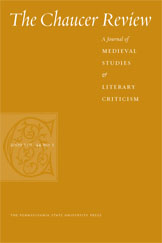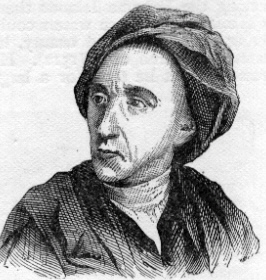 W
WGeoffrey Chaucer was an English poet and author. Widely considered the greatest English poet of the Middle Ages, he is best known for The Canterbury Tales. He has been called the "father of English literature", or, alternatively, the "father of English poetry". He was the first writer to be buried in what has since come to be called Poets' Corner, in Westminster Abbey. Chaucer also gained fame as a philosopher and astronomer, composing the scientific A Treatise on the Astrolabe for his 10-year-old son Lewis. He maintained a career in the civil service as a bureaucrat, courtier, diplomat, and member of parliament.
 W
WThe Chaucer Review: A Journal of Medieval Studies and Literary Criticism is an academic journal published by the Penn State University Press. Founded in 1966 by Robert W. Frank, Jr. and Edmund Reiss, The Chaucer Review acts as a forum for the presentation and discussion of research and concepts about Chaucer and the literature of the Middle Ages. The journal publishes studies of language, social and political contexts, aesthetics, and associated meanings of Chaucer's poetry, as well as articles on medieval literature, philosophy, theology, and mythography relevant to study of the poet and his contemporaries, predecessors, and audiences.
 W
WChaucer School is a secondary school with academy status located in the Parson Cross area of Sheffield, South Yorkshire, England. Named after Geoffrey Chaucer, the school became Sheffield's third comprehensive school in 1964, located on two sites separated by a field, one newly built. These were made up of the west building (Top) located on Halifax Road and the east building (Bottom) on Wordsworth Avenue.
 W
WContact between Geoffrey Chaucer and the Italian humanists Petrarch or Boccaccio has been proposed by scholars for centuries. More recent scholarship tends to discount these earlier speculations because of lack of evidence. As Leonard Koff remarks, the story of their meeting is "a 'tydying' worthy of Chaucer himself".
 W
WThe Poets' Fountain was a public fountain with sculptures that was installed on a traffic island in Park Lane, London, in 1875. It was removed in 1948 and it is thought to have been destroyed. One sculpture, an allegorical figure of Fame, is known to have survived and is displayed in the gardens at Renishaw Hall in Derbyshire.
 W
WAlice Chaucer, Duchess of Suffolk was a granddaughter of the English poet Geoffrey Chaucer. Married three times, she eventually became a Lady of the Most Noble Order of the Garter, an honour granted rarely to women and marking the friendship between herself and her third husband William de la Pole, 1st Duke of Suffolk with King Henry VI and his wife Margaret of Anjou.
 W
WThe Temple of Fame: A Vision is an eighteenth-century poem by Alexander Pope, directly inspired by Geoffrey Chaucer's fourteenth-century poem The House of Fame. First published in 1715, the poem comprises 524 lines which, like Chaucer's original version, take the form of a dream vision. The poem's precise date of composition is ambiguous, but Pope asserted that it was composed in 1711 even though its initial publication was implied by a letter from Pope to Martha Blount, written in 1714, in which he referred to the poem as ‘just out.’ Eventually the work was classified by the poet himself as a ‘juvenile poem’ among his earlier translations and imitations.